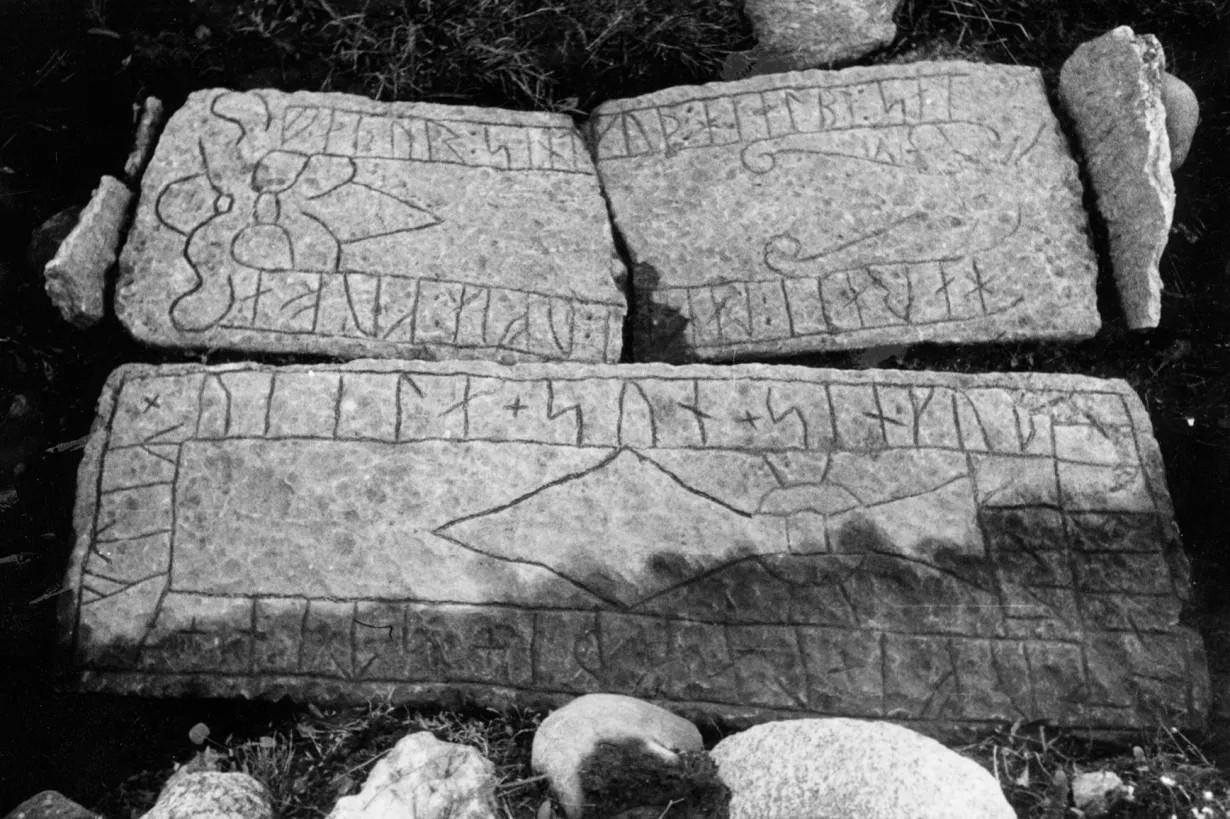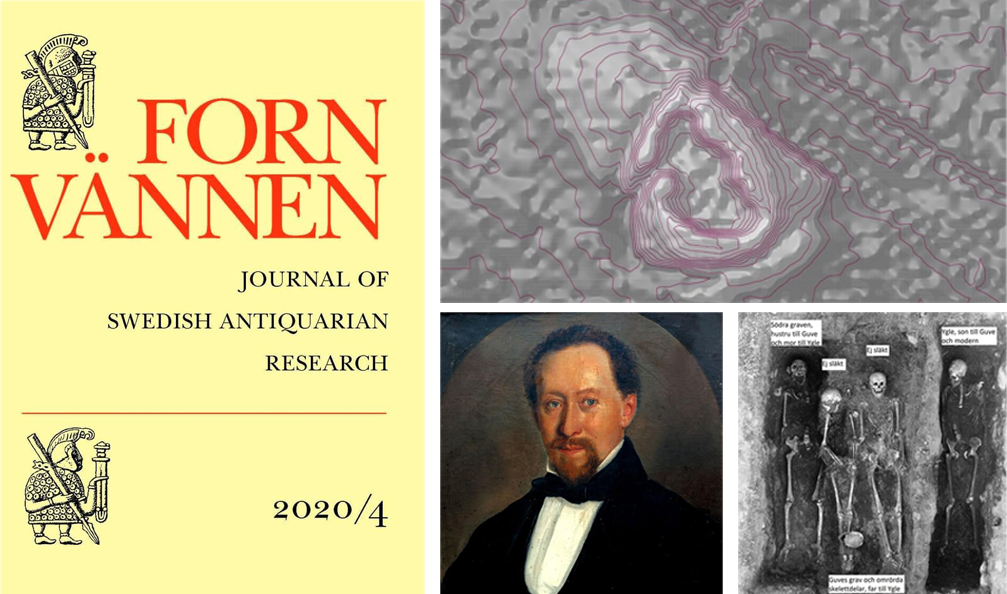DNA Unlocks the Family Ties of Early Christian Tombs in Viking Age Skänninge





DNA Reveals Secrets of Early Christian Graves at Skänninge
The historical exploration of burial sites often unveils secrets of the past, and the analysis of DNA has become an invaluable tool in piecing together the relationships of those long gone. Such is the case with the early Christian graves of S:t Martins in Skänninge, a site steeped in history and enigma that has captivated archaeologists and historians for over eight decades.
Archaeologist Berit Wallenberg embarked on a groundbreaking investigation in 1939 at the former S:t Martin churchyard in Skänninge, Sweden. Working under the commission of Östergötlands museum and other authorities, she meticulously uncovered two limestone-covered grave monuments and five skeletons at a depth of over half a meter. These early Christian burial monuments, dating back to the first half of the 11th century, represent some of the oldest of their kind in Sweden.
The craftsmanship of the gravestones proved remarkable, with both originally painted in vibrant colors and featuring intricate designs. One such grave belonged to Ygle, a young man, evidenced by a runic inscription that read, "Guve laid the stone after Ygle, his son, may God aid his soul!" The northern slab, etched with a large cross and runic inscription, stood as a testament to medieval Christian devotion.
The allure of early Christian gravestones in Östergötland, often vibrant with color, is undeniable. Over half of the early Christian grave monuments discovered in Sweden hail from this region, distinguished by their colorful limestone slabs. Yet, it is exceptionally rare to find such stones resting undisturbed over the individuals they memorialize, as seen in Skänninge, Heda, and Klosterstad.
Many of the peoples we study — Celts, Greeks, Scythians, or Etruscans — live on not only in culture, but in the traces of their DNA. Seeing where your genome intersects with theirs can make history feel surprisingly close. You can explore this at www.mytrueancestry.com.
As Wallenberg commenced her excavation beneath the northern slab, she unearthed the well-preserved skeleton of a young man in a wooden coffin, believed to be Ygle based on the inscriptions. However, the southern grave posed a significant conundrum. The runic text indicated that Rane had laid the stone over Guve, his father, with the inscription "Rane laid the stone over Guve, his father. God help the soul!" Yet the disordered remains suggested a complex sequence of events.
Instead of finding Guve directly positioned beneath his monument, Wallenberg encountered disturbed skeletal parts, including a skull found unusually at the foot end of the grave. Skeletal fragments not aligned with the grave mound hinted at subsequent burials and possible grave reuse. The discovery of another skeleton beneath, initially suspected to be Rane, brought further intrigue, especially when a second aligned burial shared the space, with the remains touching so closely as if laid simultaneously.
The original forensic assessments employed in 1939 identified the buried individuals as four men and one woman. The osteological examination by Maj Florell sifted through the remains, assigning identities based on skeletal characteristics. Ygle and Guve were identified as men, while the two individuals within Guve's grave were interpreted as a man and woman, leading to assumptions about familial relationships and marriage connections.
Wallenberg's interpretation suggested a typical familial setting, with what she termed "The Real Husband" and "The Real Spouse" buried alongside the primary family members. However, the disturbed nature of the southern burial and the unusual positioning of remains suggested that the story was far more complex than initially understood.
Decades later in 2020, a collaborative effort involving fresh osteological review and advanced DNA analysis would rewrite portions of this ancient narrative. Funded by the Berit Wallenberg Foundation and conducted by SciLifeLab, this modern scientific investigation brought cutting-edge technology to bear on questions that had lingered for over eight decades.
Ygle was reaffirmed as male through both skeletal and genetic analysis, his remains whispering tales of his lineage through preserved DNA. The presumed heterosexual marriage connection between individuals in the southern grave faltered under scientific scrutiny, as DNA analysis revealed that one of the supposed spouses was actually a youthful male, thus completely severing the perceived marital ties.
The intrigue deepened significantly with DNA's remarkable revelations. The relationships depicted on the runestones held true under genetic scrutiny: Guve and Ygle indeed shared a father-son bond, confirming the accuracy of the 11th-century inscriptions. However, the real surprise lay in an unexpected matrilineal connection that defied decades of archaeological interpretation.
DNA analysis revealed that the woman found in the southern grave was actually Ygle's mother, not a sibling or unrelated individual as previously theorized. This discovery transformed the understanding of the burial arrangement and family dynamics. The remains once attributed to Rane by Wallenberg were instead those of this previously unknown mother—a woman of notable stature and considerable height who stood taller than her shorter spouse, Guve.
Perhaps most intriguingly, the DNA testing indicated that the individuals buried alongside Guve, aside from his wife, shared no direct blood connections with the main family. This revelation sparked curiosity about their inclusion in this sacred family space and highlighted the complexities of early Christian burial practices, which sometimes included those who married into prominent families or held other significant social roles.
The Skänninge findings demonstrate the profound transformation that occurs when modern scientific methods are applied to historical archaeological discoveries. This integration of DNA technology with traditional archaeological research not only validates historical inscriptions but also reveals hidden family dynamics that remained buried for over a millennium.
The discoveries push our understanding further into the world of medieval Sweden, offering tangible connections to its early Christian communities. These ancient stones serve not merely as memorials but as portals, guiding researchers through the lives of individuals who lived over a thousand years ago. The revelation that some occupants of the graves were genetic strangers adds an ironic twist to this historical drama, suggesting complex social arrangements that extend beyond simple family burial plots.
Thanks to the determined pursuit of archaeological truth and the generous support that made advanced DNA analysis possible, what began as ancient whispers beneath the soil have become a comprehensive tale of familial complexity, written not in ink, but in the very building blocks of life. The Skänninge investigation exemplifies how technological advancement can breathe new life into historical narratives, allowing researchers to verify ancient claims and uncover previously hidden relationships.
As DNA technology continues to advance, opportunities multiply for uncovering lost stories, piecing together past relationships, and breathing life into history. The findings from Skänninge remind us that beneath every ancient stone lies a story waiting to be told, and that the intersection of traditional archaeology with modern science can reveal truths that would otherwise remain forever buried.
This remarkable case study from Östergötland stands as a testament to the enduring value of archaeological preservation and the transformative power of applying contemporary scientific methods to historical questions. The graves at S:t Martins continue to serve as a bridge between past and present, connecting modern researchers with the lives, loves, and family relationships of Sweden's early Christian communities.

Discover how your DNA connects to ancient civilizations at www.mytrueancestry.com.
Comments